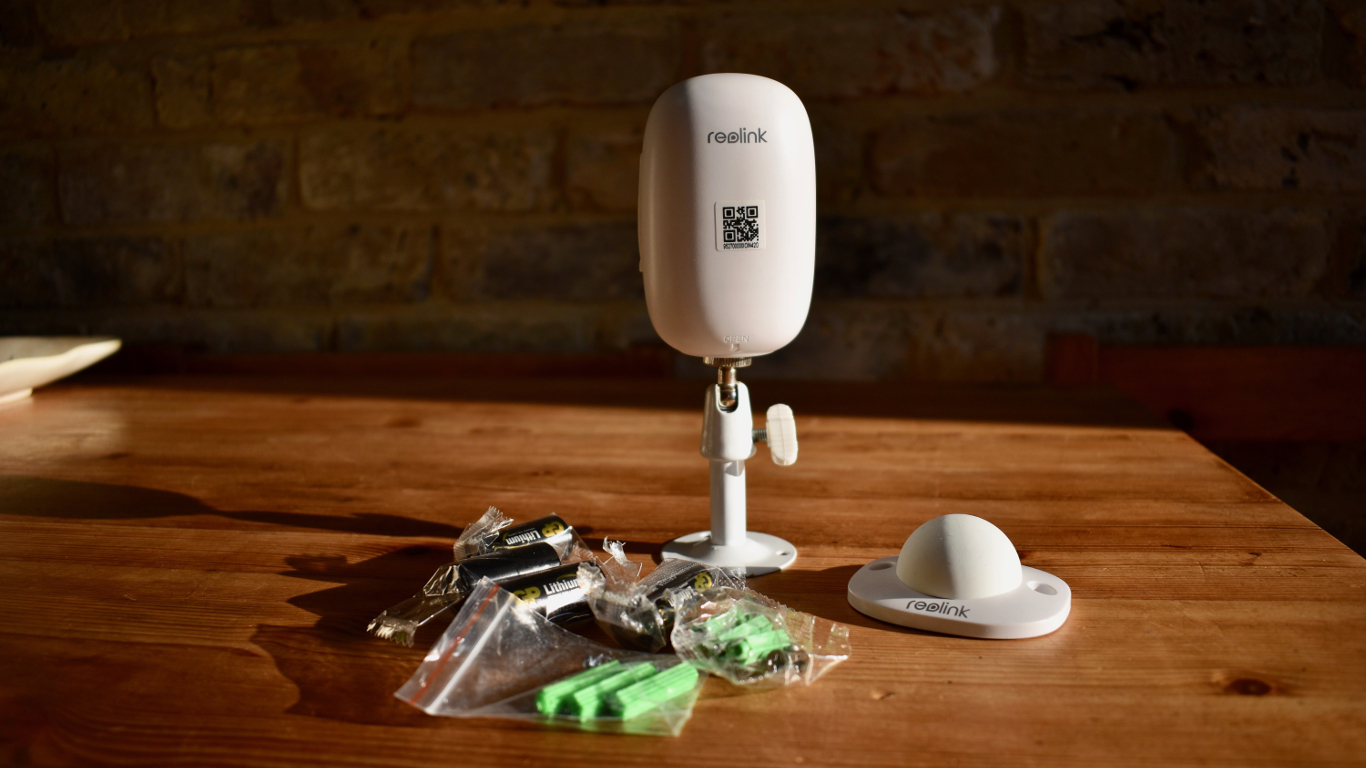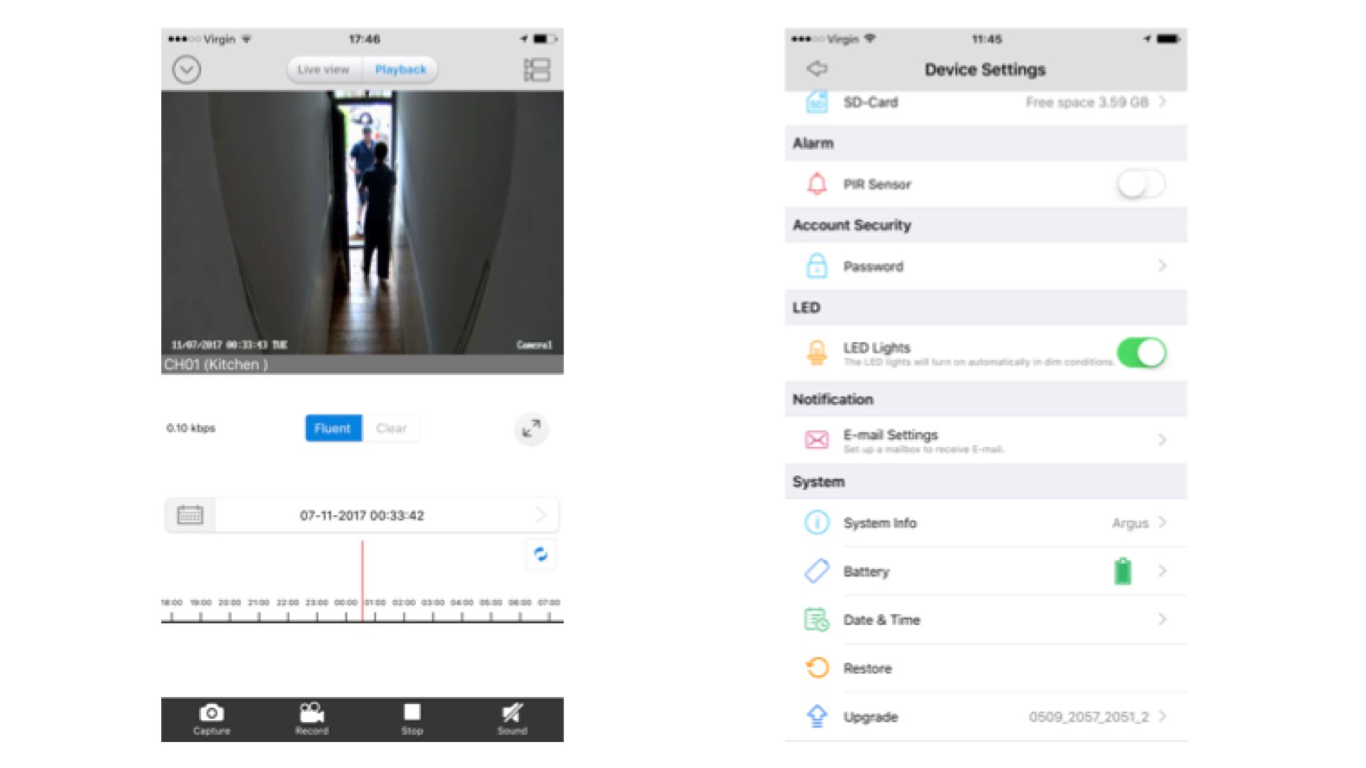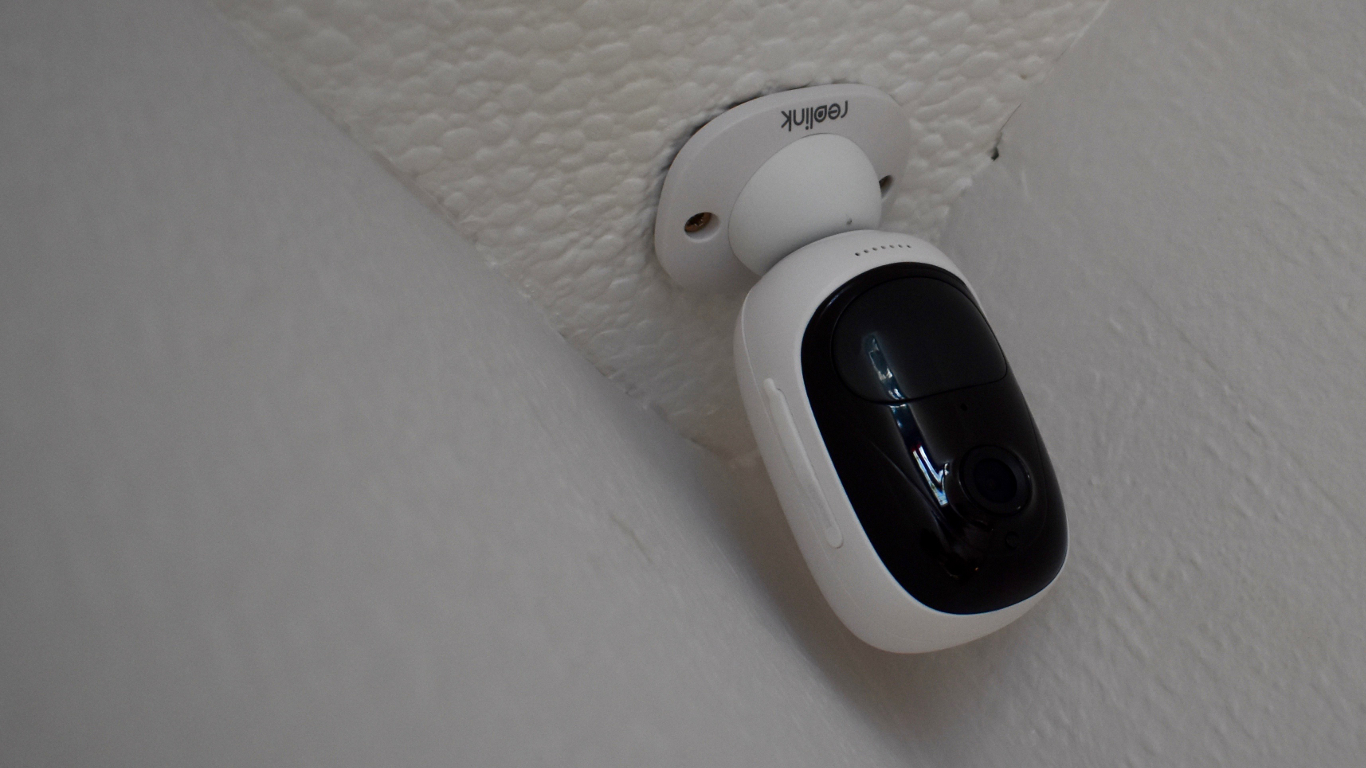TechRadar Verdict
If you’re looking for a truly wireless IP camera that doesn’t mind the rain and won’t break the bank, then Reolink’s battery-powered device is an impressive 1080p-capable solution.
Pros
- +
Choose between 720p and Full HD quality
- +
Truly wireless for flexible placement
- +
Inconspicuous design with neat magnetic wall bracket
- +
Easy voice-prompted setup procedure
Cons
- -
Limited battery life
- -
No Ethernet, or power inputs
- -
No cloud storage facility (yet)
- -
Difficulty streaming 1080p video smoothly
Why you can trust TechRadar
Although this is only Reolink’s second battery-powered, wire-free IP camera, the brand has an established range of traditional wired security systems, and the Argus is the most cost-effective proposition so far – even though it comes in a sealed, weatherproof case and manages Full HD resolution. The camera is about to launch, in fact it ships worldwide next week, with the price set at $90 (around £70, AU$120).
The box includes a lozenge-shaped compact camera with inbuilt PIR motion detection, two wall brackets and the four batteries required to get up and running.
There are no cables in the box because the Argus is completely wireless, using your Wi-Fi network to send alerts to your phone and stream video in up to 1080p quality. And with a microSD card slot for recording the action, there’s no additional subscription cost with this one-off purchase.

Design and build
The smooth capsule design and white finish of the Argus make it blend into the background, so much so that you might not notice it – but for the row of LEDs (although these can be turned off). It also means there are no vulnerable parts that could break off, and it feels well-built despite being made of plastic. Most outdoor cameras are metal affairs, but Reolink’s effort doesn’t feel too flimsy at any rate.
It’s smaller than any other IP camera we have tested, fitting easily in the hand, and when you turn it over, you’ll see the watertight cover that hides the microSD card slot and reset button. The PIR motion sensor is barely visible beneath the camera and there’s also a tiny mic and speaker. A hole at the base allows the device to be screwed into the table stand or wall bracket which are included in the box.

Here are the full specs of the Reolink Argus:
Type: IP camera
Location: Indoor/outdoor
Mounting: 2 x wall/ceiling brackets included
Connectivity: Wi-Fi only
Resolution: 1080p
Night Vision: IR LEDs (effective up to 10m)
PIR motion sensor: Yes
Audio: Two-way sound
Battery: Yes
Local video storage: microSD card (up to 64GB)
App support: Android/iOS
Subscription: No cloud storage
Size/Weight: 58 x 90 x 49mm (W x H x D); 183g
Features
Despite the modest price (Reolink is currently offering an up to 20% introductory discount with pre-orders, as of the time of writing) the Argus is a fully featured and well-specified smart camera. It can record and stream in either 720p or 1080p quality over Wi-Fi and being battery powered, it is fully wireless, so you can carry it and set it down in any location within your Wi-Fi network.
It’s rated as IP65 weatherproof which means it can be used outside because the casing is sealed against the rain and it can operate at minus 10 degrees centigrade.
Sign up to the TechRadar Pro newsletter to get all the top news, opinion, features and guidance your business needs to succeed!
A speaker and mic are incorporated into the device for two-way audio and a microSD card slot allows you to record up to 64GB of video without any need to sign up for a subscription-based cloud service. And that’s just as well because there isn’t one, although Reolink tells us that its R&D team is working on a server for limited free and paid-for data storage.
The field of view is 130-degrees wide to capture as much of the room as possible, while IR LEDs allow you to see up to 10 metres in the dark.
The inbuilt PIR detects motion and can send an alert to a companion app that runs on a mobile device (there’s no web portal) when someone, or something, steps in front of the camera. It’s not smart enough for facial recognition and can’t distinguish people from animals. There’s no digital zoom either, but you can at least adjust the sensitivity of the motion sensor in three steps to reduce false positives.

Installation and use
With no wires whatsoever to think about, this must be the simplest security system we’ve ever installed. The process of syncing the camera with your phone and Wi-Fi network is rendered fool-proof by a dead easy-to-use system of QR codes. Scan a couple of these, enter your Wi-Fi password when prompted, and you’re done.
Two alternative mounting brackets are included in the box, one of which is a tall screw-on stalk, and the other a magnetic ball and socket bracket. Reolink has even included a packet of screws. The beauty of Argus is that you can install both brackets in different locations and just carry your camera from one to the other with no interruption in service.
The only problem we had during installation was getting the app to accept an Apple Mail email address for sending and accepting alerts. In the end we gave up and used Gmail, which still took some time to configure. The app itself is more user-friendly than, for instance, Foscam’s companion app, as it allows you to update the software with a single tap.

Performance
We tried the Argus both outdoors and inside, and found the wide field of view to be clear and well-lit in both cases. Colours are rather muted and the picture is grainy in low light (and very grainy in the dark), but in all cases, faces were crisp enough to identify at some distance.
Filming in Full HD gives you quite impressive clarity although in practice, streaming 1080p over Wi-Fi and then via whatever phone network is available is going to be problematic. For us, just getting 720p video to play on an iPhone 7, while outside our own Wi-Fi network, worked only about half of the time – and even then it was very jerky and frustratingly slow to load. But that says more about the reality of video streaming than the Argus.
Crucially, what the Argus can also do is email you a still image from the camera. This means that when an alert arrives on your phone and you are unable to watch the video feed, you can at least see who, or what, triggered the camera. This worked nine times out of ten, although if the intruder is quick, they can run past before the picture is taken.
(ed: Motion detection video clips are saved to the SD card and so you can check the intruder later - assuming of course s/he didn't take the camera away)
By customising the sensitivity of the PIR, and in our case, dialling down the video resolution, the Argus worked satisfactorily. There is room for improvement regarding the app, however. For instance, locating your recordings is not easy as they are not labelled. There’s a timeline view, but events are not marked on it – perhaps this will be addressed with future software updates.

Jim has been evaluating printers for more than twenty years and has, to date, written over a hundred reviews for TechRadar Pro. From pocket printers to industrial dye sublimation, Jim has been there, run the tests and printed the t-shirt. His expertise extends to consumables (paper, ink, toner) and his printer buying guides make it easy to compare these essential peripherals.
